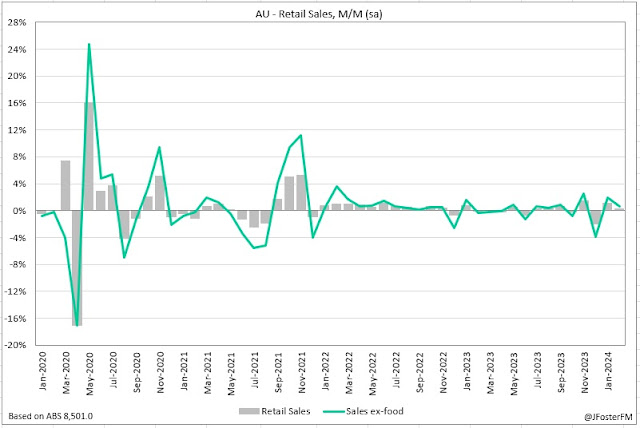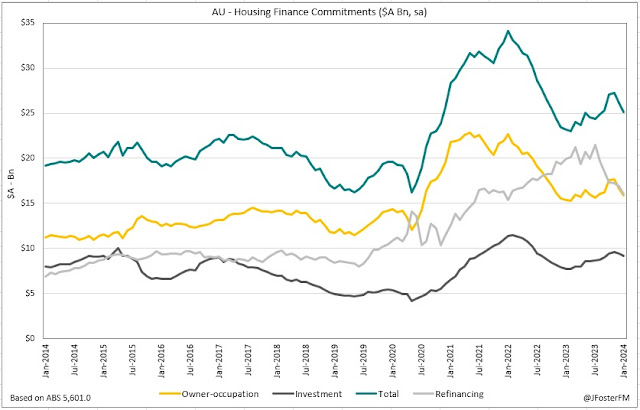The first quarter of the year has drawn to a close, providing a chance to reflect on some key themes that have played out in markets. Notably, there was a significant reduction in the amount of policy easing from the Federal Reserve priced for this year, driving higher bond yields and a stronger US dollar. Despite this, equity markets still rallied broadly to record highs; US markets gained 9-10% and Europe was up 12%, but the standout was Japan surging in the order of 20% as the Yen slid to its lowest level against the USD in three decades.
Key inflation data in the US was largely in line with expectations. Following an upwardly revised 0.5% rise in January (from 0.4%), the core PCE deflator lifted 0.3% in February. Although the annual pace ticked down from 2.9% to 2.8%, the outturns from the opening months of the new year have seen the 3-month (3.5%) and 6-month (2.9%) annualised rates accelerate from a sub-2% pace at the end of 2023. This confirms there has been a lift in inflationary pressures in early 2024. Following the report, Fed Chair Jerome Powell said returning to 2% inflation will be a "sometimes bumpy path", with the Committee needing more confidence in the outlook before it could cut rates. Earlier in the week, Fed Governor Waller outlined that the recent data argued for a reduced extent of policy easing or a later start to the easing cycle.
Australian CPI inflation printed at 3.4%yr in February, coming in below the 3.5% consensus estimate and leaving the pace unchanged since December. Downside misses on headline inflation in the past two reports suggest that inflationary risks are continuing to ease and that Australia has seemingly avoided the sort of pick-up in inflation seen in US in the early part of the year. However, there were elements in the report that were less encouraging, including trimmed mean inflation ticking up from 3.8% to 3.9% and services prices elevating from 3.7% to 4.2%. Overall, the report broadly validates the RBA's inflation outlook but also its caution. My review of the CPI report has more analysis here. Also of note domestically this week, February retail sales moderated to a 0.3% month-on-month rise, slightly weaker than the 0.4% lift expected; however, discretionary categories outperformed (0.6%), with the ABS linking this to spending associated with the Taylor Swift Eras Tour (see here). Meanwhile, despite a 6.1% retracement in the 3-months to February, job vacancies remain elevated at just over 360k, the data consistent with an easing but still-robust labour market.
There were few catalysts out of either Europe or the UK to shift markets this week. Markets continue to anticipate both the ECB and the BoE to begin cutting rates from June. The risks look to be for a later move from the BoE, with the ECB having guided towards June for some time now. In the UK, final revisions confirmed a 0.3% contraction in Q4 GDP (-0.2% year-ended). Household consumption declined by 1% over the back half of 2023 as cost-of-living pressures and higher interest rates weighed on demand. Meanwhile, the UK's current account deficit deteriorated from 3% to 3.9% of GDP in Q4. This was driven by a widening in the underlying trade deficit (1.3% to 1.8% of GDP), with exports declining and imports increasing.














































